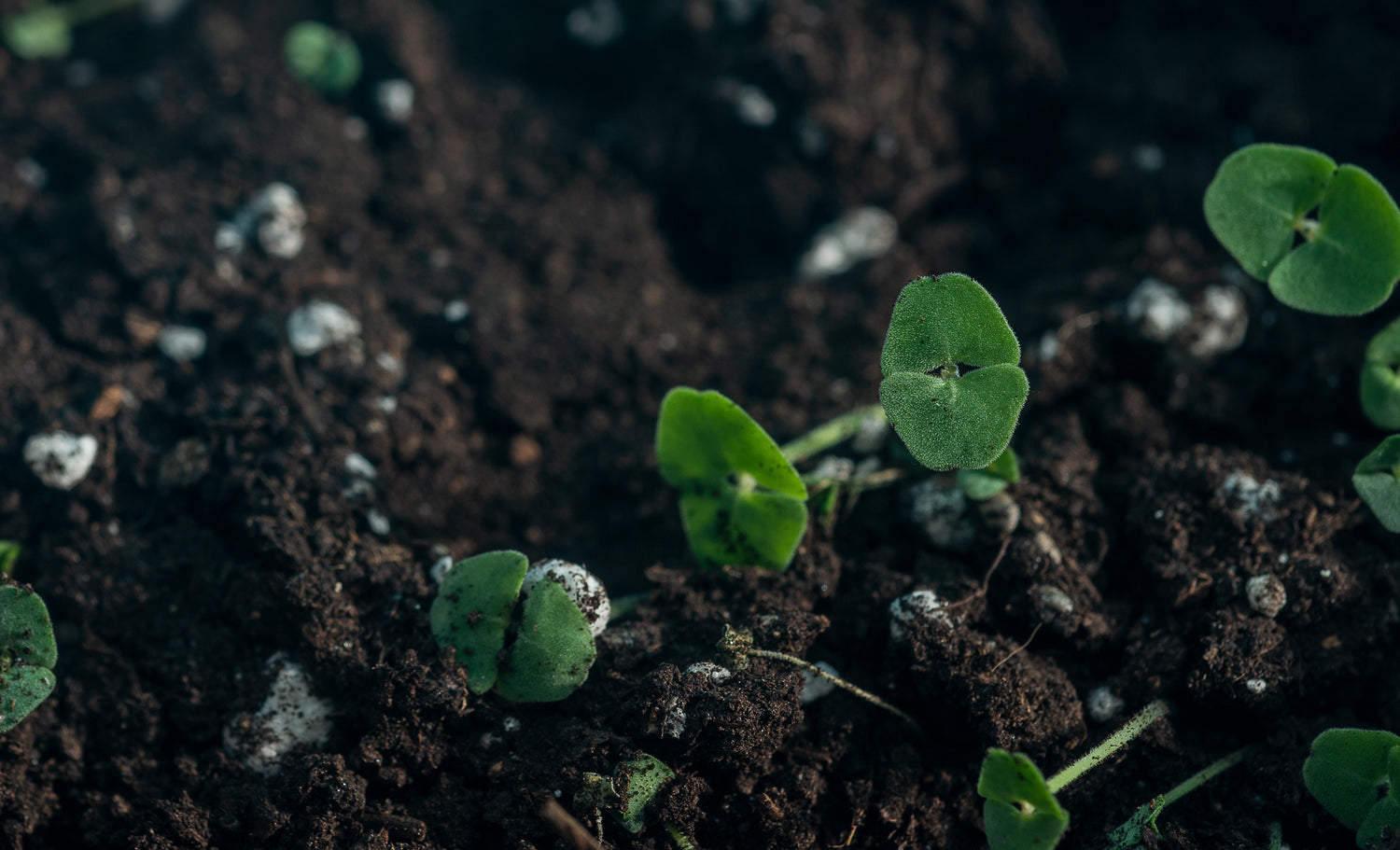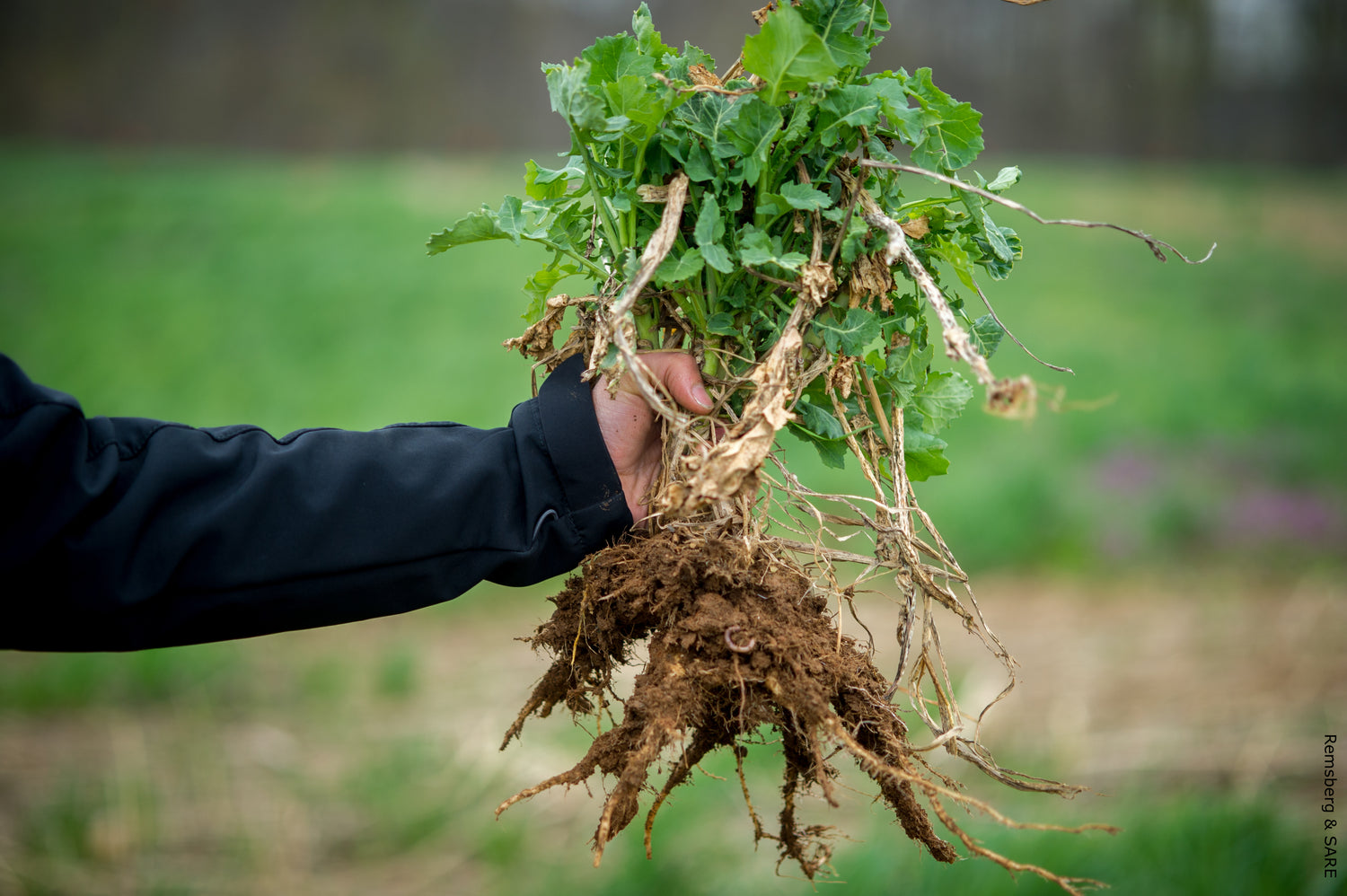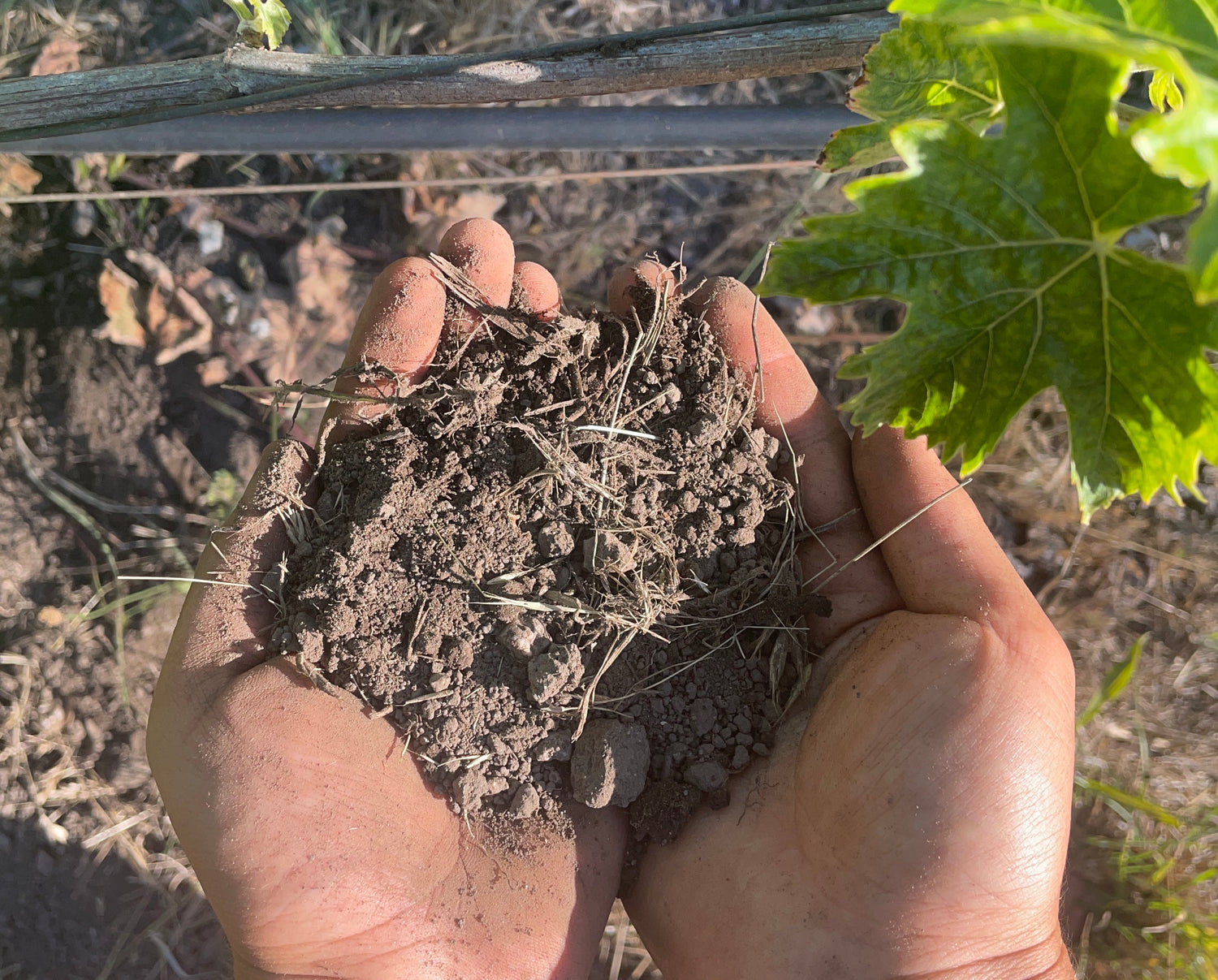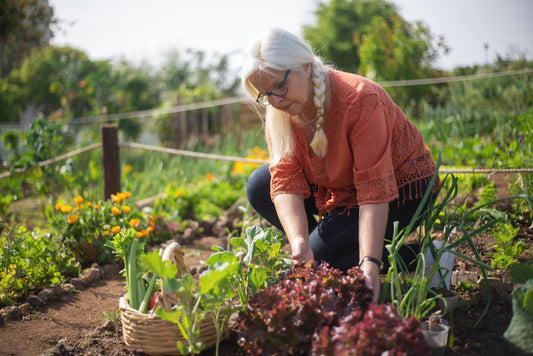Ventura County's coastal location and Mediterranean climate create a unique soil landscape shaped by marine terraces, alluvial deposits, and volcanic influences. These diverse soils form the foundation of California's premier agricultural region, supporting everything from world-famous strawberries to thriving avocado groves across varied topography from coastal plains to inland valleys.
Ventura County contains five main soil types: well-drained loamy sands perfect for berries and vegetables, nutrient-rich clay loams supporting tree crops, balanced loams ideal for diverse agriculture, water-retentive clay soils, and sandy loams suitable for vineyards and drought-tolerant crops.
Ventura County Soils: A Complete Guide for Growers and Gardeners
Geographic and Climatic Context
Ventura County sits along California's coast between Los Angeles and Santa Barbara, encompassing coastal plains, inland valleys, and mountainous terrain. The county's Mediterranean climate features wet winters and dry summers, with annual rainfall ranging from 12-20 inches depending on elevation and proximity to the ocean.
According to the USDA Natural Resources Conservation Service, the county's soils formed through various geological processes including marine deposition, alluvial transport, and volcanic activity. These processes created the diverse soil landscape that supports Ventura County's agricultural economy and natural ecosystems.
Primary Soil Classifications
The USDA Soil Survey organizes Ventura County's soils into several major groups based on their physical properties, drainage characteristics, and formation processes. Understanding these classifications helps farmers and gardeners select appropriate crops and management practices for their specific locations.
Loamy Sand Soils: Coastal Plains Excellence
Loamy sand soils dominate the Oxnard Plain and other coastal areas, formed from marine sediments and alluvial deposits. These soils offer excellent drainage and easy cultivation but require careful nutrient management due to their tendency toward leaching.
The well-drained nature of these soils makes them ideal for strawberry production, which has made Ventura County famous worldwide. Cool-season vegetables like lettuce, celery, and broccoli also thrive in these soils, taking advantage of the moderate coastal temperatures and good air circulation around plant roots.
Gardeners working with loamy sand soils should focus on regular organic matter additions and efficient irrigation to maintain fertility and prevent nutrient loss through leaching.
Clay Loam Soils: Nutrient-Rich Foundations
Clay loam soils occur throughout the Santa Clara River Valley and other inland areas, formed from weathered sedimentary rocks and alluvial materials. These soils excel at retaining both water and nutrients, making them valuable for perennial crops that benefit from consistent moisture and fertility.
Avocado and citrus trees perform exceptionally well in these soils, as the clay content provides steady water availability while the loam texture allows for adequate drainage. The nutrient-holding capacity of clay loams reduces fertilizer requirements compared to sandier soils.
Proper drainage management becomes critical in clay loam soils to prevent waterlogging during wet periods. Many successful orchards in these soils incorporate drainage tiles or raised planting areas.
Balanced Loam Soils: Agricultural Versatility
True loam soils, with relatively equal proportions of sand, silt, and clay, occur in transition zones throughout the county. These soils represent the ideal agricultural medium, offering good drainage while retaining adequate moisture and nutrients.
The versatility of loam soils allows for diverse crop rotations and makes them suitable for both annual vegetables and perennial crops. Many of Ventura County's mixed farming operations rely on these soils for their flexibility in crop selection and management.
Home gardeners particularly appreciate loam soils for their ease of cultivation and ability to support a wide variety of plants from vegetables to ornamentals.
Clay Soils: Water Conservation Champions
Heavy clay soils occur in low-lying areas prone to flooding and in some upland locations with specific geological conditions. While challenging to manage, these soils offer exceptional water and nutrient retention capabilities.
The high water-holding capacity of clay soils makes them suitable for crops that can tolerate periodic wet conditions. Proper timing of field operations becomes crucial, as these soils can become unworkable when wet and extremely hard when dry.
Organic matter additions significantly improve clay soil structure, enhancing both drainage and ease of cultivation while maintaining the soil's beneficial water retention properties.
Sandy Loam Soils: Upland Productivity
Sandy loam soils occur on slopes and elevated areas throughout the county, offering good drainage while retaining more moisture than pure sandy soils. These soils work well for crops that prefer drier conditions and excellent drainage.
Grape production thrives on sandy loam soils, particularly on hillsides where drainage is naturally enhanced. The moderate water retention of these soils suits viticulture's need for controlled water stress during fruit development.
Tree crops like citrus and avocados also perform well on sandy loams, especially when supplemental irrigation maintains adequate moisture during dry periods.
Hydrologic Properties and Water Management
Ventura County's soils fall into different hydrologic soil groups based on their water infiltration rates. Group A soils, primarily sandy types, allow rapid water infiltration and require careful irrigation scheduling to prevent both water waste and plant stress.
Group B soils, including many loams, offer moderate infiltration rates that balance water retention with drainage. These soils often provide the most efficient use of irrigation water and natural rainfall.
Group C and D soils, with higher clay content, have slower infiltration rates and may require drainage management to prevent waterlogging. However, their water retention capabilities can reduce irrigation needs during dry periods.
Soil Chemistry and Fertility Management
Ventura County soils generally range from slightly acidic to neutral pH, with some alkaline conditions in areas influenced by marine deposits. According to UC Cooperative Extension guidelines, most agricultural crops perform best when soil pH ranges from 6.0 to 7.5.
Salinity management becomes important in coastal areas where salt spray and irrigation water quality can affect soil chemistry. Regular soil testing helps monitor salt levels and guide management decisions for sensitive crops.
Nutrient management varies significantly by soil type, with sandy soils requiring more frequent applications of nitrogen due to leaching, while clay soils may need attention to phosphorus availability and potassium balance.
Seasonal Growing Patterns
Ventura County's Mediterranean climate allows for year-round agriculture, with soil type influencing optimal planting windows. Cool-season crops flourish during fall through spring, taking advantage of natural rainfall and moderate temperatures.
Warm-season crops dominate summer production, particularly in areas with adequate irrigation infrastructure. The county's soil diversity allows farmers to select appropriate crops for each season based on their specific soil conditions and water availability.
Crop rotation practices help maintain soil health while maximizing productivity throughout the year. Many operations alternate between cool-season vegetables and warm-season crops to optimize both soil nutrition and economic returns.
Sustainable Soil Management Practices
Conservation practices play a crucial role in maintaining Ventura County's soil productivity while protecting environmental quality. Cover cropping during fallow periods prevents erosion and adds organic matter to improve soil structure.
Integrated pest management reduces reliance on chemical inputs while maintaining crop quality and yields. These practices protect beneficial soil organisms that contribute to natural fertility and disease suppression.
Water-efficient irrigation systems, including drip and micro-sprinkler technology, help conserve water while maintaining optimal soil moisture conditions for crop growth.
Testing and Monitoring
Regular soil testing provides the foundation for effective soil management in Ventura County. Basic tests should include pH, electrical conductivity (salinity), organic matter content, and major nutrients including nitrogen, phosphorus, and potassium.
Micronutrient testing becomes important for high-value crops that may show deficiency symptoms in certain soil types. Calcium, magnesium, sulfur, and trace elements like zinc and boron may require monitoring and supplementation.
Professional soil testing services are available through UC Cooperative Extension, private laboratories, and agricultural consultants who specialize in local conditions and crops.
Climate Challenges and Adaptations
Changing precipitation patterns and increased temperature variability require adaptive soil management strategies. Building soil organic matter improves both water retention during dry periods and drainage during intense rainfall events.
Drought preparedness includes selecting appropriate crops for each soil type and investing in efficient irrigation infrastructure. Clay soils may allow for reduced irrigation during drought years, while sandy soils require more intensive water management.
Erosion control becomes increasingly important as weather patterns intensify. Ground cover, terracing, and conservation tillage help protect valuable topsoil from both wind and water erosion.
Urban and Small-Scale Applications
Home gardeners and small-scale growers can apply professional soil management principles to their specific situations. Container gardening allows for complete soil control in areas with challenging native soils.
Raised bed construction provides improved drainage and soil quality for urban gardens while allowing for customized soil mixes appropriate for specific crops or growing goals.
Composting programs help urban and suburban residents improve their soil while reducing organic waste. Local municipalities and organizations often provide composting education and materials.
Economic and Environmental Benefits
Proper soil management contributes significantly to Ventura County's agricultural economy while supporting environmental conservation goals. Healthy soils reduce input costs while maintaining or improving yields over time.
Carbon sequestration in agricultural soils helps address climate change while improving soil fertility and structure. Practices that build organic matter provide both economic and environmental benefits.
Water quality protection through responsible soil management helps preserve both ground and surface water resources for future agricultural and urban use.
Resources and Support
Ventura County offers numerous resources for soil management education and support. The UC Cooperative Extension office provides research-based information and educational programs for both commercial and home growers.
The Ventura County Resource Conservation District offers technical assistance and cost-share programs for conservation practices. Local farm advisors provide expertise specific to regional crops and conditions.
Professional agricultural consultants specializing in soil management and crop nutrition are available throughout the county to provide customized recommendations for specific operations.
Conclusion
Ventura County's diverse soils provide the foundation for one of California's most productive agricultural regions. Understanding soil types, properties, and management requirements enables both commercial growers and home gardeners to maximize productivity while maintaining long-term soil health. Through proper testing, appropriate crop selection, and sustainable management practices, these valuable soil resources can continue supporting productive agriculture and healthy ecosystems for future generations.
Sources
- USDA Natural Resources Conservation Service. Web Soil Survey - Ventura County. https://websoilsurvey.sc.egov.usda.gov/
- University of California Cooperative Extension - Ventura County. Soil Management Guidelines. https://ceventura.ucanr.edu/
- California Department of Food and Agriculture. Ventura County Crop Report. https://www.cdfa.ca.gov/statistics/
- Ventura County Resource Conservation District. Soil Health Programs. https://www.vcrcd.org/
- USDA NRCS. Soil Health Management. https://www.nrcs.usda.gov/conservation/soil-health/
- California Association of Resource Conservation Districts. Soil Conservation Practices. https://carcd.org/
- UC Davis Soil Science Department. California Soil Resources. https://lawr.ucdavis.edu/programs/soil-science
- California Sustainable Agriculture Research and Education Program. Soil Management. https://sarep.ucdavis.edu/












